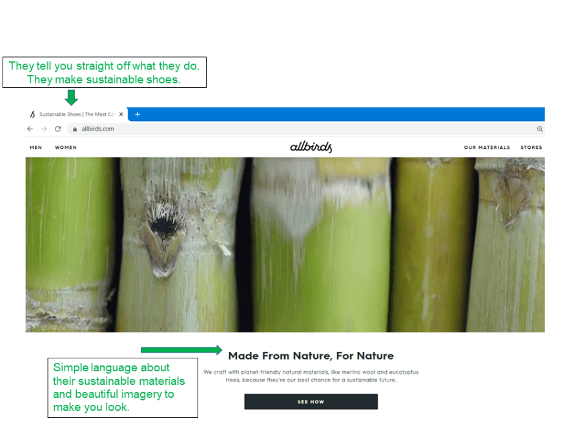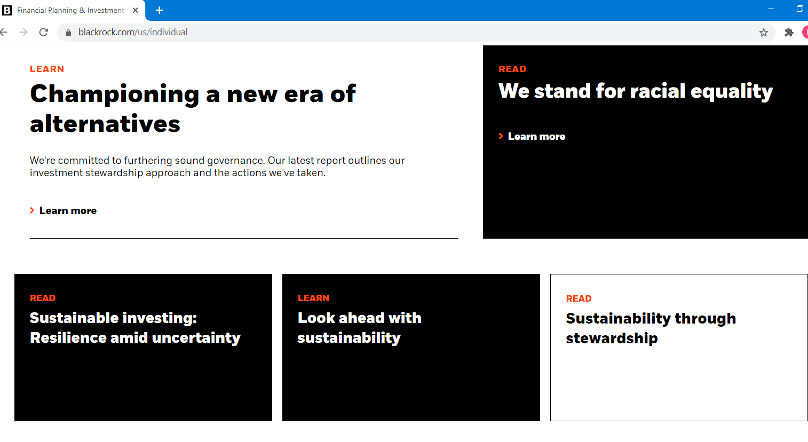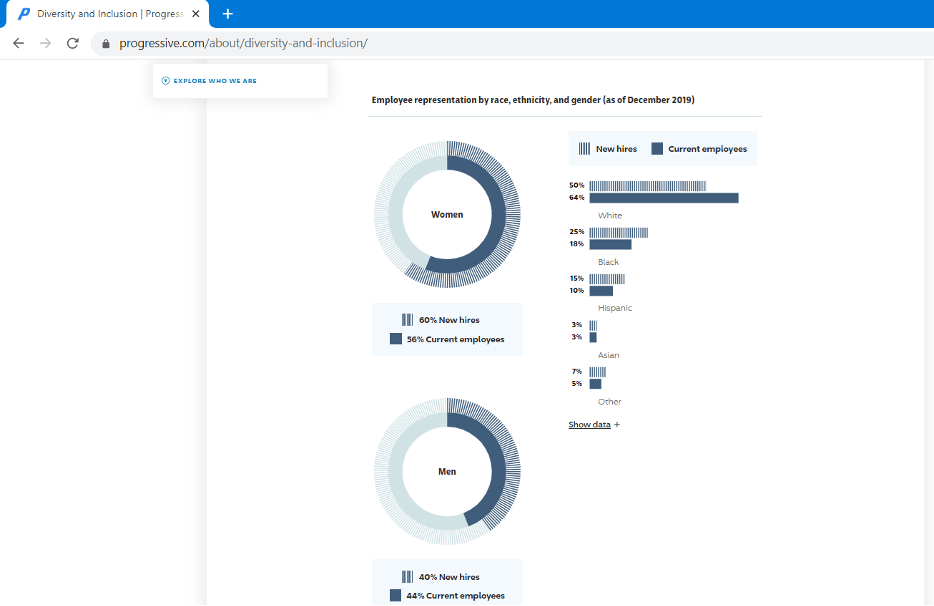Start Making Your CSR Efforts Part of Your Brand Story
Integrated marketing isn’t only about selling your company’s products or services in every medium or channel available. It also includes telling your company’s overall story—who it is and what it stands for (and won’t stand for)—internally and externally.
Too often, companies bury their CSR and ESG efforts in a website footer link or an annual report — a one-and-done strategy that doesn’t yield the recognition you deserve from employees, customers, partners, investors, or the media.
So, start using the CSR and ESG investments you’re already making to bolster your overall brand and credibility. Start connecting the dots for people, so you become a sought-after employer of choice, a prized investment, a company with must-have products or services, and a partner who inspires others, especially in your communities.
Below we show you how Allbirds (footwear), BlackRock (investment management), and Progressive Insurance weave their CSR efforts into their marketing and communications efforts instead of simply burying them in a report.
Allbirds
Starting with its website tab, this beloved DNVB (Digitally Native Vertical Brand) tells you straight out that it sells sustainable shoes. Talk about making it easy for the reader!
From there, it weaves its sustainability credentials seamlessly throughout the rest of its website. Instead of telling you what they do in dry, technical language, they show you through simple words and evocative images.
Sure, they have links in their website footer that include “Our Materials” and “Sustainability,” but this is more a belt and suspenders approach. They’re going to reach you with the ways they “do less bad” in multiple ways. There’s no missing their CSR efforts, which is as much a part of their brand as is their graphics, logo, and tone of voice (TOV).

What’s this means for your brand story?
Stop making your customers, (future) employees, investors, partners, and the media hunt down CSR information on you. Make it seamlessly part of your brand story when you talk about the products you make and your approach to making them.
BlackRock
Blackrock is the world’s largest asset manager with nearly $7 trillion under management. Yes, that’s a lot of zeroes. Most financial companies are often an easy target for those fed up with greed and a lack of social investment. And for good reason. But what if a large corporation aligned its investing with ESG (environmental, social, and governance) principles and called attention to it? That’s exactly what BlackRock is doing.
Head to their website and you’ll notice their ESG stance is smack dab in the middle of it. From a communications perspective, they’re aligning both their brand and product story in a clear and simple way to topics that include sustainable investing, racial equality, and stewardship. There’s no rooting around their website or clicking on a sitemap to find out what they’re about.
Their “About Us” link is a masterclass in understanding your audience: “Our purpose is to help more and more people experience financial well-being. We are dedicated to helping our clients, employees, shareholders, and communities achieve financial security, financial mobility, and financial freedom.” Talk about clear communications. They talk about more than clients: They include employees, investors, and the communities in which they operate.

What’s this means for your brand story?
Your product is your brand story and your brand is your product. Sure, you might sell hundreds, if not thousands, of products, but they all represent your brand. So do your employees. Make sure the story you tell about who you are and what you do is front and center in all your communications (whether you want to call it internal comms or brand marketing is up to you) so employees can be your best brand representative.
Progressive Insurance
There’s an interesting trifecta at play with Progressive. They’re on Fortune Magazine’s “100 Best Companies To Work For” list; they’re a member of the Business Roundtable (the organization that famously stopped focusing solely on shareholders to include all stakeholders); and their CEO is a woman.
Tricia Griffith, who became the CEO in 2016, started off as a claims representative in 1998 and worked her way to the top job. If ever there were a poster child for promoting from within, she’s who you want on your landing page. In addition, their “Diversity and Inclusion” section (which, sadly, takes a little bit of digging to get to) reveals the composition of their workforce by gender and race. They don’t talk about the importance of representation in a generic way; they show it.

What’s this mean for your brand story?
Current and future employees want to know “there’s someone like me there” when they show up to work. If you don’t have the numbers to show a diverse workforce, then tell employees and everyone else how you’re changing the situation. As this year’s social unrest shows, it matters. Critically.
Lessons Learned
-
First and foremost, stop burying your CSR efforts in a one-off report or your website footer. Integrate your CSR story into your overall brand story and tell the world (and employees) about it.
-
Start connecting the dots for people. Whether it’s your employer brand strategy or the sustainable ingredients you use in your products, they’re all part of your CSR efforts. Do your employees know everything you support and why? What about your partners? Customers? Spell it out for them in an emotionally engaging way, both internally and externally.
-
Don’t talk in vague generalities about socially responsible topics like diversity and inclusion. Show people who you are—the composition of your workforce by gender and race. And if you don’t like what you see, then tell people how you’re going to change.
When it comes to your CSR efforts, taking an integrated marketing approach will ensure two things: your initiatives will be a reflection of who you truly are as an organization and your work will be embedded and entwined in the DNA of the organization. That’s a win for you and your team, your employees, your company, and your communities.
About the Authors
Jason Anthoine is the managing founder of Audacity, a workplace culture firm. He has more than 30 years’ experience in corporate communication, employee engagement, and culture change. His work has helped more than 100 organizations keep their 200,000+ employees informed, involved, and inspired. ThinkAudacity.com.
Madeline Temple is the brand and communications strategist behind Collective Identity. She tells companies how to talk about who they are and what they do … to employees, customers, investors, partners, journalists, and six-year-olds. Madeline brings a global perspective gained in a career spanning 25+ years both on the agency and client-side and on both sides of the Atlantic. TheCollectiveIdentity.com.
Together, they are the co-hosts of Do Less Bad, that podcast about how companies can do less bad so they can do more good. DoLessBad.com